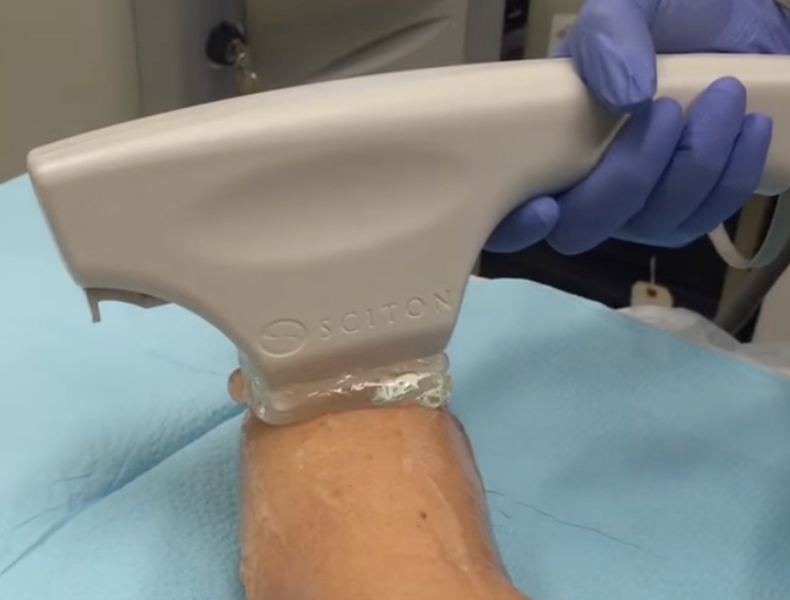Laser Resurfacing
Northern Virginia and Washington DC area
- Table Of Contents
- Introduction
- Preparing For The Procedure
- The Procedures
- Post-Treatment Care
Introduction
Laser resurfacing has evolved significantly over the past decade. Newer technology, different wave lengths, and treatment protocols have all led to improved outcomes, reduced complications, and reduced downtime. Laser resurfacing can now be performed in an ablative fashion to treat deep wrinkles and textural problems, in a fractional fashion to treat acne scars and in a superficial fashion to improve tone, texture and fine lines. These procedures are typically done in the office with light sedation and local anesthesia. These procedures can also be done in stages to achieve excellent outcomes while reducing recovery and downtime.
Deep laser resurfacing is indicated for treating severely sun damaged skin with deep wrinkles and textural changes. It is also indicated for patients with a condition called rhinophyma. It can also be used for scar management in some situations. Fractional laser resurfacing is indicated for treating acne scarring, large pores and moderate textural changes. MicroLaserPeel® or superficial peels are indicated for treating mild to moderate sun damaged skin with sun spots, mild textural changes, and fine lines and wrinkles.
The premise is simple, if some or all of the top layer of the skin is removed, then new skin will regenerate, and new collagen is deposited leading to a healthier appearance with even color tone and consistency.
Preparing For The Procedure
An initial consultation is set-up where we discuss the laser resurfacing procedure, and whether you are a good candidate for this procedure. Alternatives may be discussed as well. Your medical history is reviewed. For deep laser resurfacing, you are asked to stop smoking, if you are a smoker, two weeks before and two weeks after the procedure, for the procedure to be performed safely, and for you to have optimal results. You are given the opportunity to talk to patients who have had the same procedure you are considering. We will see you shortly after the procedure, in a day or two usually, for more invasive laser procedures. You are seen regularly after your procedure. You are always welcome to come back for follow-up, even years after your procedure, free of charge.
Pain Level After Surgery
Anesthesia
Duration of Surgery
Scars
Final Results
Return to regular activity
Resume Exercise
The Procedures
Deep Laser Resurfacing
For the right patient, laser resurfacing can be extremely gratifying. The advantages are natural looking results, long-term skin enhancement with what is usually a difficult problem to address, and no scarring from the laser resurfacing itself. This procedure takes about thirty minutes to one hour, depending on the areas being treated.
The procedure is relatively simple and straightforward. A patient, who is deemed a good candidate for this procedure, is given antibiotics and anti-virals. The patient is given a mild oral sedative and topical or local anesthesia is administered. Next, the laser is used to precisely, resurface the skin in either a deep, fractioned or superficial fashion. The early result appears as either mild redness or moderate redness with minimal bleeding. A thick ointment or ointment and dressings are placed on the treated area. Frequent washes and ointment reapplication are initiated once you get home. The skin is pink for a few days to two weeks, and gradually starts looking natural and vibrant. Patients are cautioned to stay out of the sun the first few weeks after this procedure. As new skin is forming, it is more susceptible to hyperpigmentation when exposed to the sun. Smoking delays wound healing, which can lead to permanent scarring.
MicroLaserPeel
Transform your skin with a MicoLaserPeel for treatment of fine lines, sun damage, and pigment irregularities. This unique laser/peel combination improves skin tone and texture with a short downtime. Multiple treatments may be required depending on severity of skin condition.
Your treatment is customized to your skin type and condition. Prior to treatment, the skin is numbed topically. The laser/peel may take about 30 minutes or longer, depending on your skin concerns. Immediately following the treatment, you may experience redness, which can last for three to four days. You will be advised on after-care, which includes use of a protective ointment to keep the skin moist. Over time, your skin will show increasing improvements, revealing new, healthier skin.
NanoLaserPeel ™
Discover the benefits of laser resurfacing with the NanoLaserPeel. This mild resurfacing laser uses light energy to instantly remove the top layers of the skin at just the right depth to accelerate the skin’s renewal. The combination of heat and laser mechanics resurface the skin by stimulating more collagen production and treat fine lines, sun damage, and pigment irregularities.
The NanoLaserPeel is a great “weekend peel.” After your treatment, you will be instructed to use a protective ointment and redness may occur for up to one day, with maximum down time of three days, so you are able to return to work looking refreshed after the weekend. The treatment results in luminous skin without the time and harshness of chemical peels or microdermabrasion.
Post-Treatment Care
Our office will provide you with a detailed post-operative instruction sheet that will be individualized to your needs.
For more information about this procedure, call our office at 703-206-0506.
Content on this website is for information only and should not be used to diagnose or treat your plastic surgery or cosmetic surgery problems. Please contact your plastic surgeon with all questions and concerns.
Contact Us
If you are interested in laser resurfacing in the Fairfax, VA area, call (703) 206-0506 or fill out our contact form.
“Natural beauty but doing a little somethin’ somethin’ to make beautiful features pop is what the Model Lift™ accomplishes.”
Dr. George Bitar

